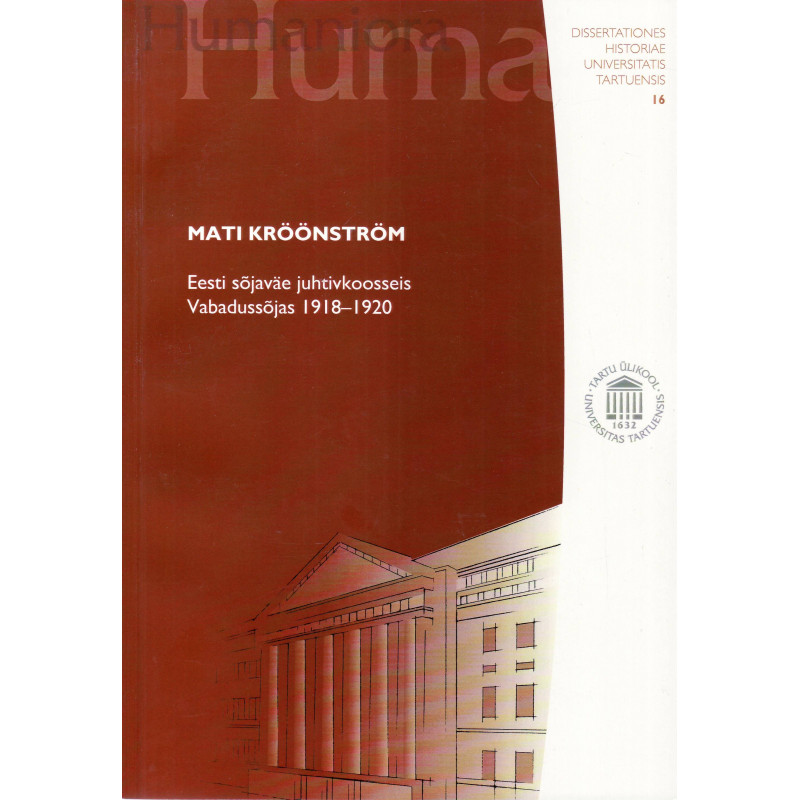



Mati Kröönström
Tartu : Tartu Ülikooli Kirjastus, 2008
311 p. : ill.
Dissertationes historiae Universitatis Tartuensis ; 16
ISBN:9789949190362
Softcover book in good condition
Doctoral theses defended at the University of Tartu
The Officer Corps of the Estonian Army in the War of Independence in 1918-1920
This work researches the history of Estonian officers during the period of the Estonian War of Independence, encompassing the officer core, beginning with the high ranking officers, down to and including regiment and single battalion level officers. The focus is primarily on the professional training of officers. The number of officers included (739), is sufficient for generalizations to be made about the officer core as a whole. In the autumn of 1917, the Russian army included some 3000 officers of ethnic Estonian descent. Out of this number roughly 2/3 took part in the War of Estonian Independence. The officers who were engaged in the hostilities were primarily war- time officers (ensigns) as the lines of cadre officers were relatively thin. The model Estonian officer of the period would have typically been 24-30 years of age infantry officer, having received the rank of ensign by 1915 or 1916, and had by the fall of 1917 been promoted to the rank of either stabs-captain or lieutenant. The typical officer would also have been decorated with up to three medals for combat duty, had a 70% chance of originating from the province of Livonia, and belonging to peasantry. In parallel with those officers who took part of The Estonian War of Independence some attention is also given to officers of Estonian descent more generally, including those individuals who took part in the Russian Civil War, giving an overview of their prospective outlooks and destinies. Around 250 of them serving in the Red Army and roughly 500 in the White armies. A couple of dozen Estonian officers served in the Ukrainian Army or were inactive during the Russian Civil War. Most of them returned after the war to Estonia. To give a measure of comparison, the work also studies the officer core of the opposing side – i.e. the Red Army commanding staff. The comparison leads to the conclusion, that whilst benefiting from better high ranking officers, the Red Army’s efforts were undermined by inferior tactical level commanders (battalion and company level) in relation to their Estonian counterparts.